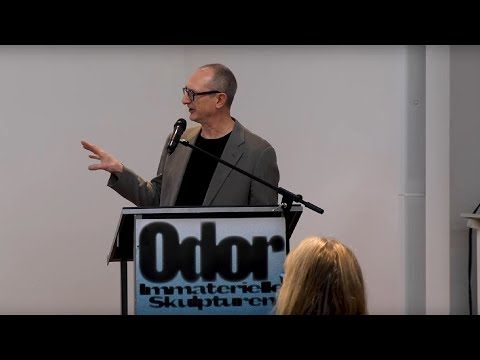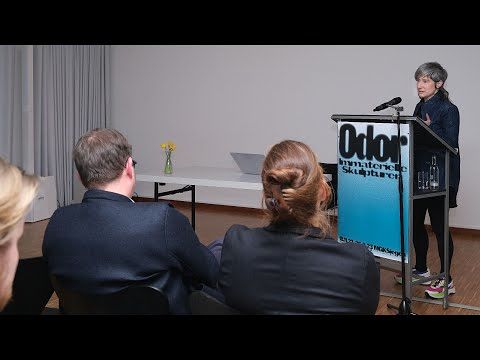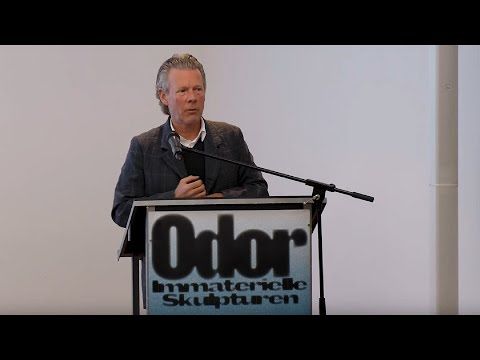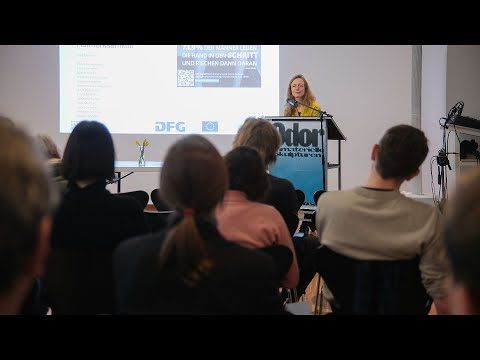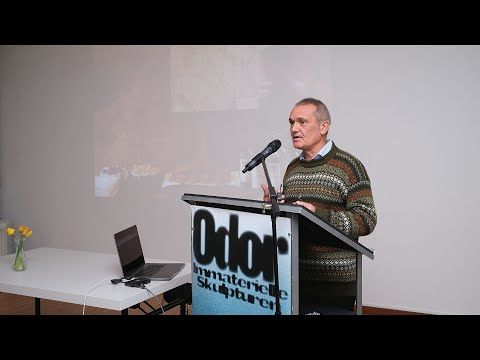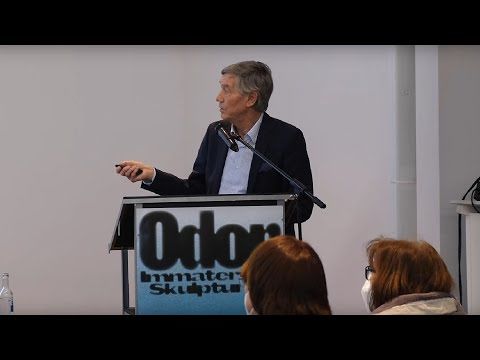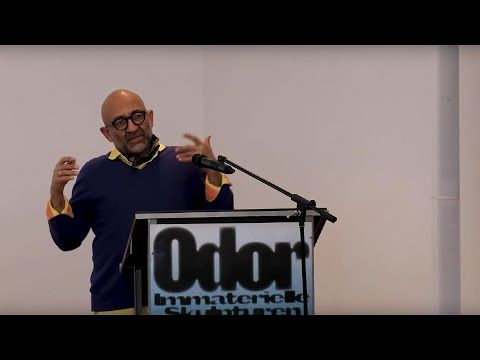Symposium Odor
The exhibition Odor, Immaterial Sculptures was entirely dedicated to the power of smells. It brings together works that place smell as an olfactory and spatial experience at the center of the experience of art. On display are immaterial sculptures, including existing works as well as numerous new productions that were developed for this special exhibition and confront visitors with the capabilities of the sense of smell.
Accompanying the exhibition, the international symposium will deepen the exploration of the sense of smell and the properties of the immaterial. The invited speakers from art and science will open up current perspectives on the messages of scents in art and society. With contributions by Ilona Croy, Professor of Clinical Psychology, Friedrich Schiller University Jena Jim Drobnick, Professor of Contemporary Art and Theory, OCAD University Toronto, CA Hanns Hatt, Professor of Cell Physiology, Ruhr University Bochum Oswaldo Maciá, Artist, Santa Fe, New Mexico (USA) and London (UK) Robert Müller-Grünow, Scentcommunication, Cologne Clara Ursitti, Artist, Glasgow (UK) Luca Vitone, Artist, Milan (IT) and Berlin.
The contributions of the respective speakers are listed in individual videos down below.
From 28.4.-8.10.23 the exhibition Odor, Immaterial Sculptures can be seen at the Ferdinandeum in Innsbruck under different conditions.
Olfactory Art: Origins, Predicaments, Challenges
Jim Drobnick, Professor für Zeitgenössische Kunst und Theorie, OCAD University Toronto, CA
Contemporary olfactory exhibitions offer opportunities to explore the complexity and significance of smells in art. With diverse roots in multi-sensory events, anti-modernist movements, and avant-garde art, one could say that an artistic interest in scent has been percolating for centuries. Yet it has been only recently that visual artists have specialized in scent and a distinct genre of olfactory art has emerged. What does this mean for museums? This presentation surveys how olfactory art generates sensory predicaments that usefully challenge aesthetic habits, decolonize the senses, and raise new possibilities for scent's relevance to everyday life.
Il Buono, il brutto, il cattivo
Clara Ursitti, Künstlerin, Glasgow (UK)
Since the early 1990s, Clara Ursitti has worked with scent and social space creating ephemeral installations and public interventions. Underlying her practice is an obsession with what is invisible, either literally (through the non–visual senses), or metaphorically (through dominant social relations or attitudes). In this lecture, she discusses how my use of scent has evolved with particular reference to a few key works.
Scent - the most underestimated communication medium
Robert Müller-Grünow, Scentcommunication, Cologne
In German
Scent is considered the most emotional communication, which is why scents are playing an increasing role in brands and are being used more and more specifically in marketing. Technical developments such as virtuality reality are also playing with this additional sensory perception. - But how exactly does scent work? And what effects are possible beyond "smelling"? The lecture examines, alongside concrete examples, how the perception of the nose can influence evaluations and even behavior.
The importance of smelling in everyday life - insights from psychology and neuroscience
Ilona Croy, Professor of Clinical Psychology, Friedrich Schiller University, Jena, Germany
In German
Smelling is one of the evolutionarily oldest sensory systems and is fundamentally different from other perceptions: Smelling is quite imprecise, difficult to verbalize, and is wired in the brain quite differently than seeing, hearing, or touch. When people are asked which of their senses they could most likely do without, it is typically smelling. This underestimated sense plays an important role - not only in eating and drinking, but also in protecting us from disease and in our social relationships. These functions will be examined in more detail in the lecture.
Smell as Sculpture. A question of language
Luca Vitone, artist, Milan (IT) and Berlin
In German
Any object signed by an artist and exhibited in a space codified by the art system can be considered a sculpture and therefore a work of art, as defined by Marcel Duchamp a hundred years ago. Today we can say that any object can be defined as a sculpture, and since the smell is also an object, the smell is a sculpture, and to achieve this status it must be exhibited alone.
All about smelling and how it determines our lives
Hanns Hatt, Professor for Cell Physiology, Ruhr University Bochum
In German
"I can't smell you" is a well-known saying for which science has worked out in recent years the underlying molecular and cellular processes that enable us to perceive thousands of odors, even at the lowest concentrations . Modern bio- and genetic engineering methods combined with imaging techniques have given us new insights into the complex world of how fragrances affect humans. Thus, in recent years, scientifically sound data have contributed significantly to our understanding of how scents are used for human communication, change our emotions and moods, or can be used in the medical field for the diagnosis and therapy of diseases.
Composition in Three Notes/Reflections on Unconsciousness
Oswaldo Maciá, Künstler, Santa Fe (New Mexico, USA) und London (UK)
Oswaldo Maciá describes his works as sculptural compositions arising from images, objects, sounds and, above all, smells. The artist explores a (post)colonial history of smell, investigating the migration of smells which is always accompanied by a big lacuna and the disappearance of local knowledge. In doing so, he opens up different perspectives on the global changes and smells that shape cultures. Composition in Three Notes/Reflections on Unconsciousness is a based on the scents of: Balsamo tree, Myroxylon balsamum pereirae, found in the wild forest of El Salvador a tree native form Central America, Gaiacwood tree, Bulnesia sarmientoi from the unique biodiversity of El Chaco, Paraguay, South America, and Green Cardamom, Elettaria Cardamomum cultivated in Guatemala, native from India. The work was created in collaboration with Elisa Aragón, Nelexia, Guatemala. Rather than using synthetic molecules in the piece, the artist works with raw material which bear a long cultural and ritual tradition in South America. These materials can be read like a footprint of a specific place. Since colonisation, the aromatic substances have been appropriated in various ways and are associated with corruption and challenging working conditions as well as with the trade and production chain of the perfume industry. Using these natural fragrances as a basis and with the help of a yellow-edged room reminiscent of the pigmented cells of an olfactory epithelium, Maciá sets out to create an unfiltered and yet simultaneously conscious scent experience.
